How Connected is Connecticut? State Ranks 6th in the USA
/Internet access is as good in Connecticut as just about anywhere else in the country. A new report on the Top Connected States in America ranks Connecticut as the 6th most connected state in the nation. The analysis, by USDish.com, found that the top 10 states showing excellent connectivity to broadband all value connecting rural citizens to the resources they need to succeed economically, both in school and at work.
“Overall we found that the most important factor in these states’ ability to connect rural citizens to the internet were the use of government funded broadband task forces, infrastructure maintenance, and local support. The states that listened to the community were more likely to connect them to proper resources and economic growth flourished.”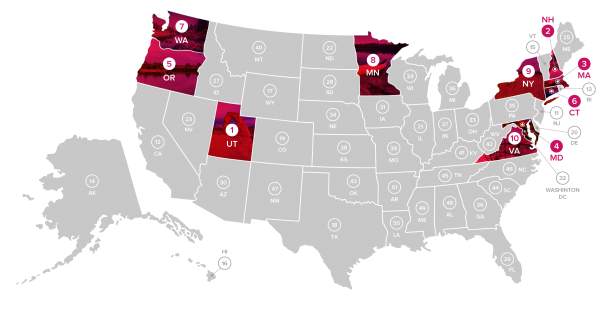
While Connecticut ranked 6th overall, the state’s ranking varied in each of the categories of the analysis: Connecticut ranked 10th in Access, 1st in Rural Access, 12th in Speed, and 21st in Support (by government).
Analysts compiled and ranked the report using data from the American Community Survey, conducted by the U.S. Census Bureau, the EducationSuperHighway non-profit, Fastmetrics, the National Conference of State Legislatures (NCSL) and the Institute for Local Self-Reliance.
Connecticut ranked 10th in Access, 1st in Rural Access, 12th in Speed, and 21st in Support. The top five states for Rural Access were all in the Northeast – Connecticut, Massachusetts, New Hampshire, New Jersey, and Rhode Island. “Perhaps the emphasis on education and communication makes it easier to access the internet as a student, even in a rural area like Connecticut,” the analysis stated.
 The analysis points out that a main reason why people don’t have access to broadband internet is due to a lack of income. Cited is a Pew Research poll that found 23 percent of people making under $30,000 per year don’t use the internet, possibly because of the high price for something they don’t consider a basic need. Most rural schools across the country still lack access to fiber and pay more than twice as much for bandwidth.
The analysis points out that a main reason why people don’t have access to broadband internet is due to a lack of income. Cited is a Pew Research poll that found 23 percent of people making under $30,000 per year don’t use the internet, possibly because of the high price for something they don’t consider a basic need. Most rural schools across the country still lack access to fiber and pay more than twice as much for bandwidth.
In contrast, Minnesota, New Hampshire, Oregon, and Maryland all have state government broadband task forces which promote the expansion of internet access throughout their rural areas, the analysis points out.
For internet access per state, the USDish team analyzed the percentage of school districts meeting a minimum of 100 Kbps per student. They also examined the percentage of those with an internet subscription, and the total percentage of users with any access to the internet at all, be it in the form of a community library, town hall, or school.
Speed was analyzed by the average Mbps per state, and they evaluated states on whether they had a stimulus project, broadband task force, or whether the state had barriers preventing them from expanding the connectivity of those living in the area (i.e. laws, infrastructure support, prohibitions, etc.). As for rural area access, data on the number of households that had broadband internet in both urban and rural areas was used. USDish.com is an authorized retailer of DISH Network.



 There are a series of steps that your body goes through to develop immunity through vaccination, the
There are a series of steps that your body goes through to develop immunity through vaccination, the 
 Joining the WFSB sports team in 1980 at age 27, Marshall spend five years at channel 3, moving from the nation’s number 23 TV market to number 13 when he relocated to Miami in 1985. At the time, he became the first black sports anchor in South Florida, according to published
Joining the WFSB sports team in 1980 at age 27, Marshall spend five years at channel 3, moving from the nation’s number 23 TV market to number 13 when he relocated to Miami in 1985. At the time, he became the first black sports anchor in South Florida, according to published 



 In Stamford, CHDI assisted in training school social workers and psychologists to deliver
In Stamford, CHDI assisted in training school social workers and psychologists to deliver 

 The National Institutes of Health estimates that between six to 17 percent of school-age children have some form of dyslexia, although not all of those students have been identified by their schools.
The National Institutes of Health estimates that between six to 17 percent of school-age children have some form of dyslexia, although not all of those students have been identified by their schools.
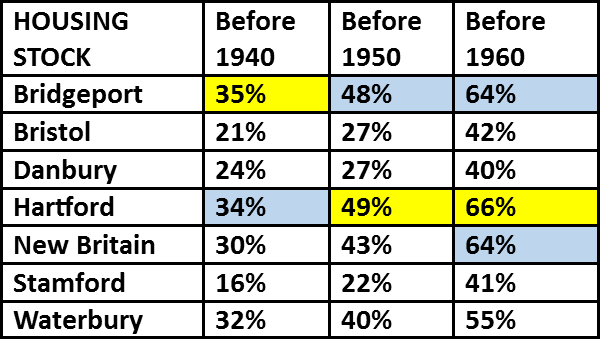
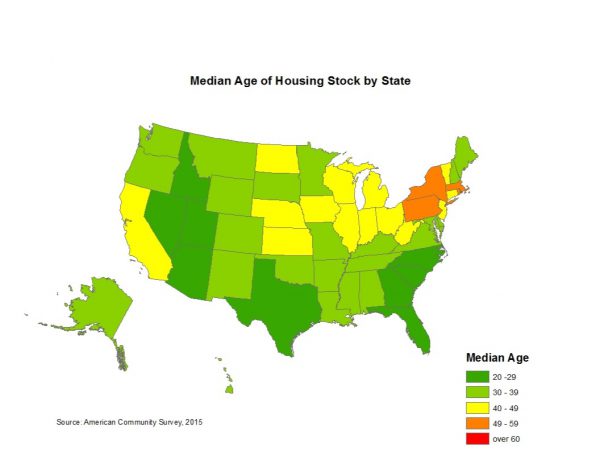
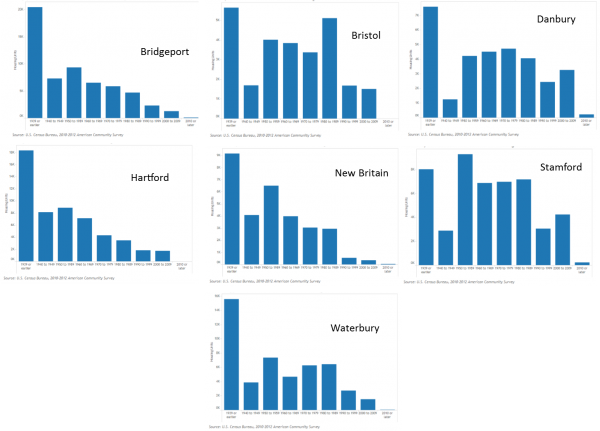







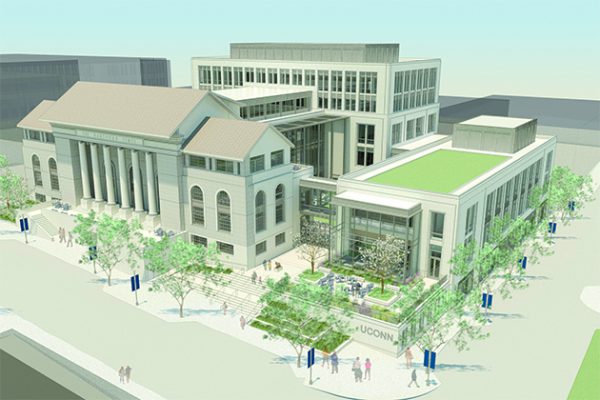 In Hartford, the university intends to “interweave top-tier academic programs with the vitality and unique educational and service opportunities offered by Connecticut’s capital city.” The campus – at a cost of $140 million - is anchored by the historic former Hartford Times building as part of a neighborhood campus that includes nearby cultural institutions and state and city government offices, including Hartford Public Library, which will house 12,000 square feet of UConn classrooms, a library collection, and study areas.
In Hartford, the university intends to “interweave top-tier academic programs with the vitality and unique educational and service opportunities offered by Connecticut’s capital city.” The campus – at a cost of $140 million - is anchored by the historic former Hartford Times building as part of a neighborhood campus that includes nearby cultural institutions and state and city government offices, including Hartford Public Library, which will house 12,000 square feet of UConn classrooms, a library collection, and study areas.
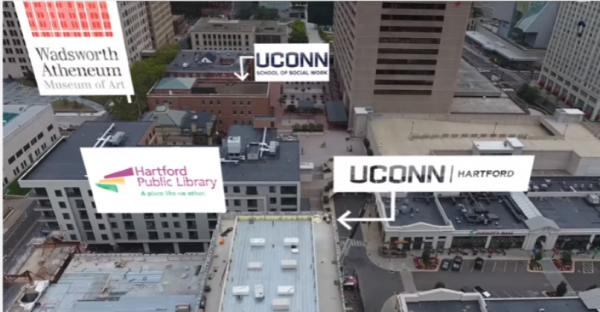 go, the Board of Trustees voted to extend the Graduate Business Learning Center’s (GBLC) lease at 100 Constitution Plaza, and to add two additional floors to the existing space, allocating a total of six floors of classroom, meeting and office space.
go, the Board of Trustees voted to extend the Graduate Business Learning Center’s (GBLC) lease at 100 Constitution Plaza, and to add two additional floors to the existing space, allocating a total of six floors of classroom, meeting and office space. The building is six stories tall and will have 116 apartment units. the school's website explains. The maximum occupancy of the building is approximately 350 students, but because some of the bedrooms will be single occupancy, the target occupancy is 290 students. Plans call for 100 designated parking spaces for students will be available for a small additional charge.
The building is six stories tall and will have 116 apartment units. the school's website explains. The maximum occupancy of the building is approximately 350 students, but because some of the bedrooms will be single occupancy, the target occupancy is 290 students. Plans call for 100 designated parking spaces for students will be available for a small additional charge.




























